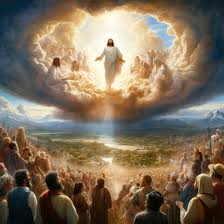W.B. Yeats - Poems
1. Yeats: The Poetic Silence :
Yeats chooses not to directly engage with the theme of war, expressing his reluctance in these lines:
This reflects Yeats's view that poetry should remain apolitical and transcend fleeting political concerns. His minimalist approach emphasizes the autonomy of art over the immediate brutality of war."I think it better that in times like these
A poet’s mouth be silent, for in truth
We have no gift to set a statesman right."
2. Wilfred Owen: The Gruesome Reality of War :
In "Dulce et Decorum Est," Owen graphically portrays the horrors of trench warfare:
Owen confronts the reader with vivid and shocking imagery of a gas attack, exposing the physical suffering and futility of war. This direct engagement starkly contrasts Yeats’s contemplative distance."If you could hear, at every jolt, the blood
Come gargling from the froth-corrupted lungs,
Obscene as cancer, bitter as the cud
Of vile, incurable sores on innocent tongues."
3. Siegfried Sassoon: Satirical Critique :
Sassoon, in "The General," uses satire to expose the incompetence of military leadership:
Sassoon's biting tone mocks the disconnect between officers and the suffering soldiers. This direct, angry critique of authority contrasts sharply with Yeats’s restrained and philosophical tone.“‘Good-morning; good-morning!’ the General said
But he did for them both by his plan of attack.”
4. The Contrast in Tone and Philosophy :
Yeats’s tone is reflective and minimalist, as shown in the understated diction of "A poet’s mouth be silent."Owen’s tone is empathetic and haunting, conveyed through graphic lines like "froth-corrupted lungs."
Sassoon’s tone is angry and satirical, demonstrated in his sharp critiques like "scarlet Majors at the Base."
Conclusion :
Yeats’s refusal to engage with the war on explicit terms highlights his modernist detachment, while Owen’s and Sassoon’s works focus on the immediate, visceral, and emotional realities of conflict. Together, they represent distinct approaches to the poetic treatment of war.
Question : 2. Write a modernist-inspired poem reflecting on a contemporary global crisis, drawing on Yeats’s themes and techniques. [Generate with the help of Gen AIlike ChatGPT or Google Gemini or Meta WhatsApp or Microsoft Co-pilot]
Answer :
The Turning Gyre
The falcon wheels in skies of fire,
Its wings a blur, a thread of ire.
No master calls, no cry resounds—
Lost in the din, the world unwound.
The oceans rise to kiss the shore,
But salt and ash are all they pour.
Forests blaze, their roots undone,
As day succumbs to a blood-red sun.
Babels loom in smog-streaked haze,
Towers birthed from greed's embrace.
The hum of machines, relentless, cruel,
Drowns whispers of an ancient rule.
What rough beast crawls from the heat,
Where charred earth and ocean meet?
Its gaze is blank, its purpose clear—
To feast upon the child of fear.
And yet, within this ashen grave,
Green shoots defy, small lives are brave.
The falcon turns, the gyre repairs,
A fragile hope, a world re-paired.
This image generated by chat GPT.
Yeats begins with the image of a falcon flying in wider and wider circles,
symbolizing the loss of control and the breakdown of order. The falcon can no longer hear the falconer, showing a disconnection between guiding forces and the world.
Blood-Dimmed Tide:
He writes of a
Mere Anarchy:
The Rough Beast:
The closing image of




.jpg)








No comments:
Post a Comment